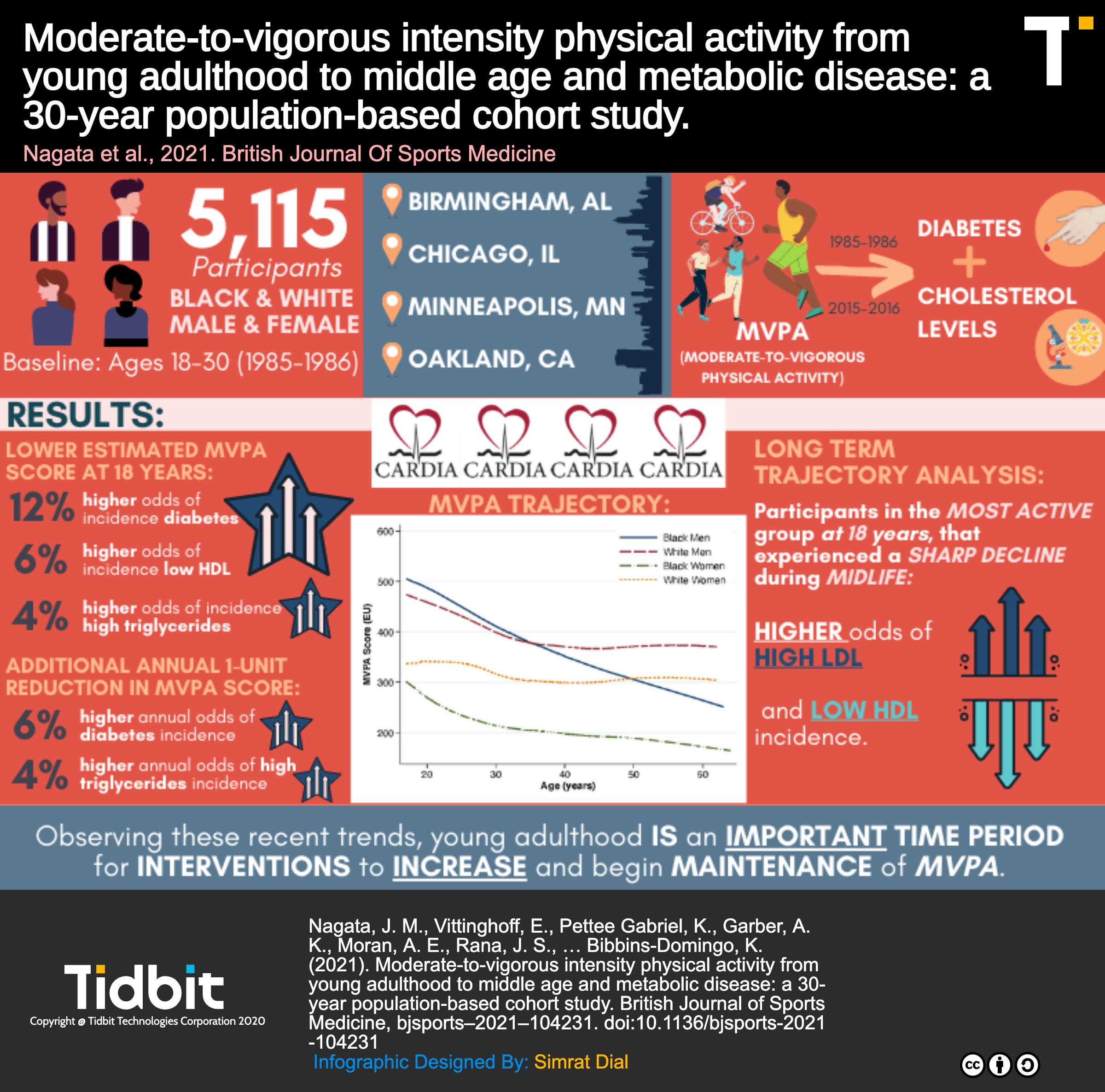Regular exercise in youth, midlife may protect against diabetes, high cholesterol in later life – part of the BJSM’s #KnowledgeTranslation blog series
Why is this study important?
Despite our understanding of the general benefits of physical activity on preventing diabetes and cholesterol problems, there is limited knowledge on how physical activity levels at different stages in the adult life course are related to the onset of these metabolic diseases. For instance, if someone is highly physically active as a young adult, but then becomes inactive by middle age, what is their risk for diabetes or cholesterol problems?
How did the study go about this?
We studied 5,115 young adults in the USA with regular follow-up over 30 years. Participants reported their moderate-to-vigorous intensity physical activity levels and had laboratory assessments for diabetes and cholesterol.
What did the study find?

- On average, physical activity declined from young adulthood to middle age, with the most persistent declines in Black men
- Young adult physical activity is associated with lower risk of diabetes and cholesterol problems, regardless of moderate-to-vigorous physical activity levels later in life
- Maintaining high levels of physical activity throughout the adult life course is also important – for any young adult “starting point,” subsequent declines in moderate-to-vigorous physical activity through the adult life course is also associated with higher risk of diabetes and high triglycerides.
What are the key take-home points?
- Given recent trends in declining physical activity across the life course and associated metabolic disease risk, young adulthood and midlife are important time periods for interventions to increase and maintain physical activity.
Author and Affiliations:
Jason Nagata, MD, MSc
Assistant Professor of Pediatrics
Division of Adolescent & Young Adult Medicine
University of California, San Francisco
-
Moderate-to-vigorous intensity physical activity from young adulthood to middle age and metabolic disease: a 30-year population-based cohort study